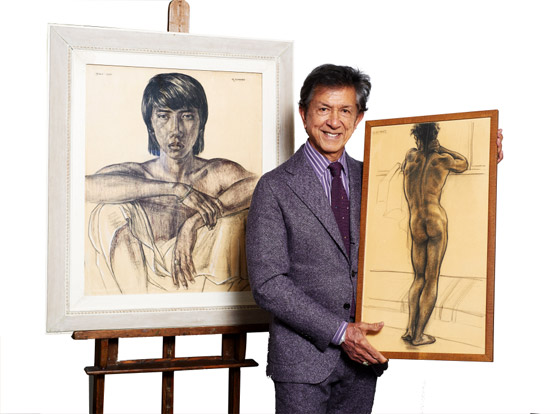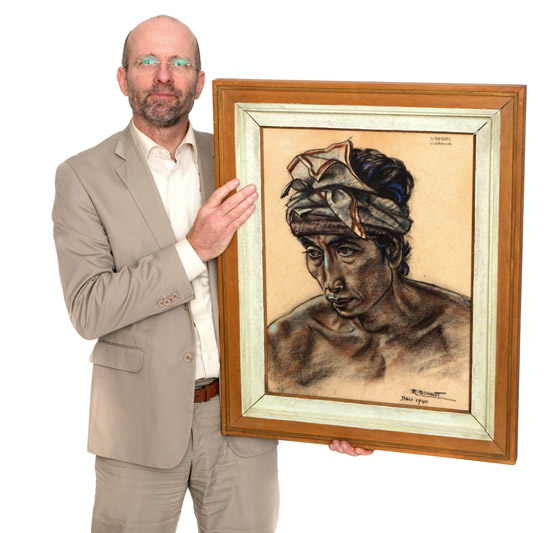The painter Raden Sarief Bastaman Saleh (1811–1880) is seen as the founder of classic painting in the Indies. He was the first painter from the Indies who used European oil painting techniques to capture the exotic landscape of his home country in all its richness and glory. As such, Raden Saleh’s work is much sought after. His rendition of fabrics and materials as well as the drama in his scenes make him a great exponent of Romantic art. In his paintings, he wonderfully combines European techniques with East Indian themes. His highly dramatised images are more closely related to French Romantic art than to its Dutch counterpart, which is generally calmer and quieter.
Yet the majority of painters in the Dutch East Indies were, in fact, Dutch, or at least European, especially in the 20th-century Dutch East Indies. The painters whose work is most sought after these days include masters such as Adrian Jean le Mayeur de Merpres, Rudolf Bonnet, Willem G. Hofker, Theo Meier, Walter Spies, Charles Sayers, Roland Strasser, Willem Dooyewaard, Auke Sonnega, and Miguel Covarrubias.
Meanwhile, the group of Indonesian painters continued to grow. Some of the most famous artists nowadays are Affandi, Lee Man Fong, Basoeki Abdullah, Hendra Gunawan, and Sindudarsono Sudjojono.


